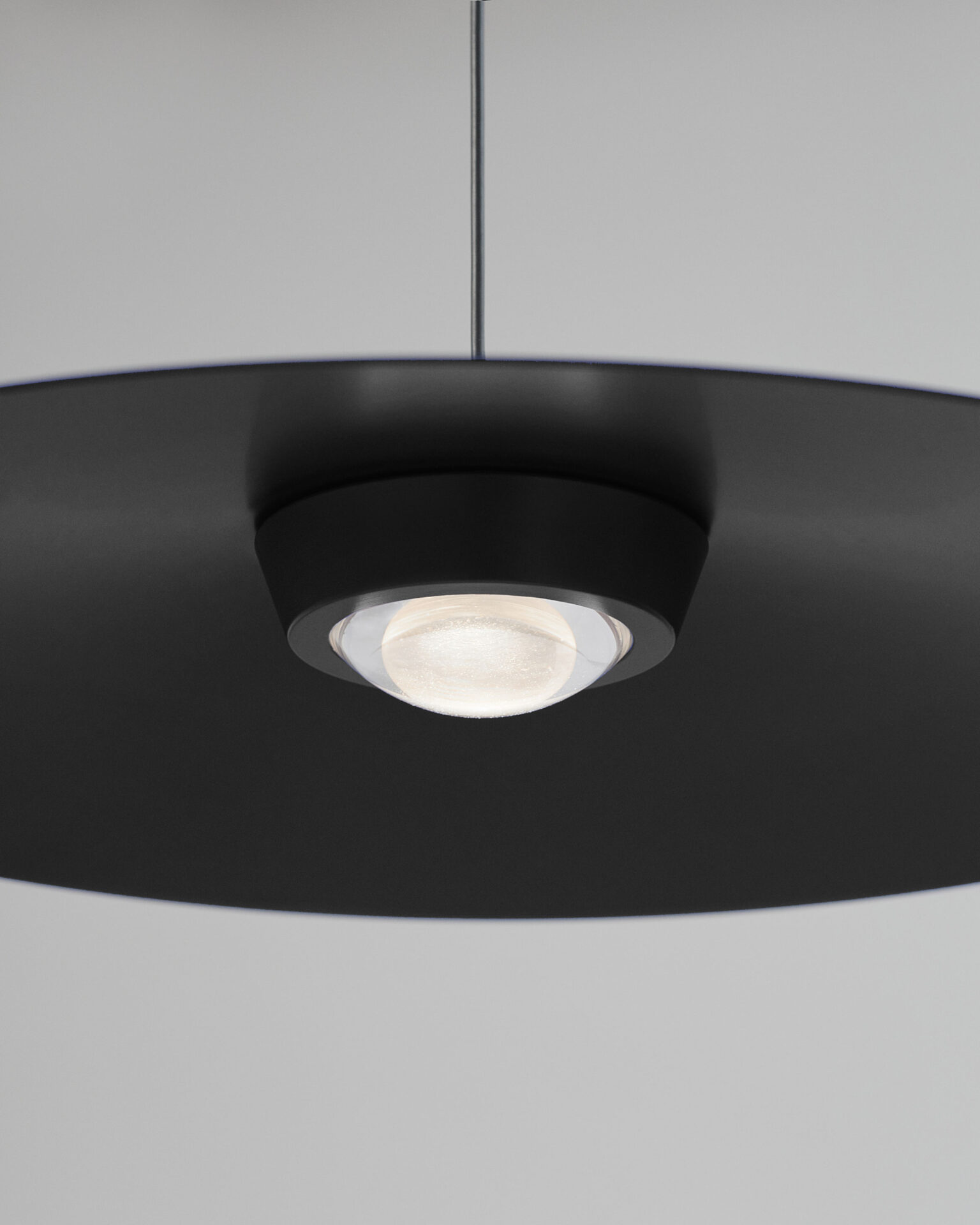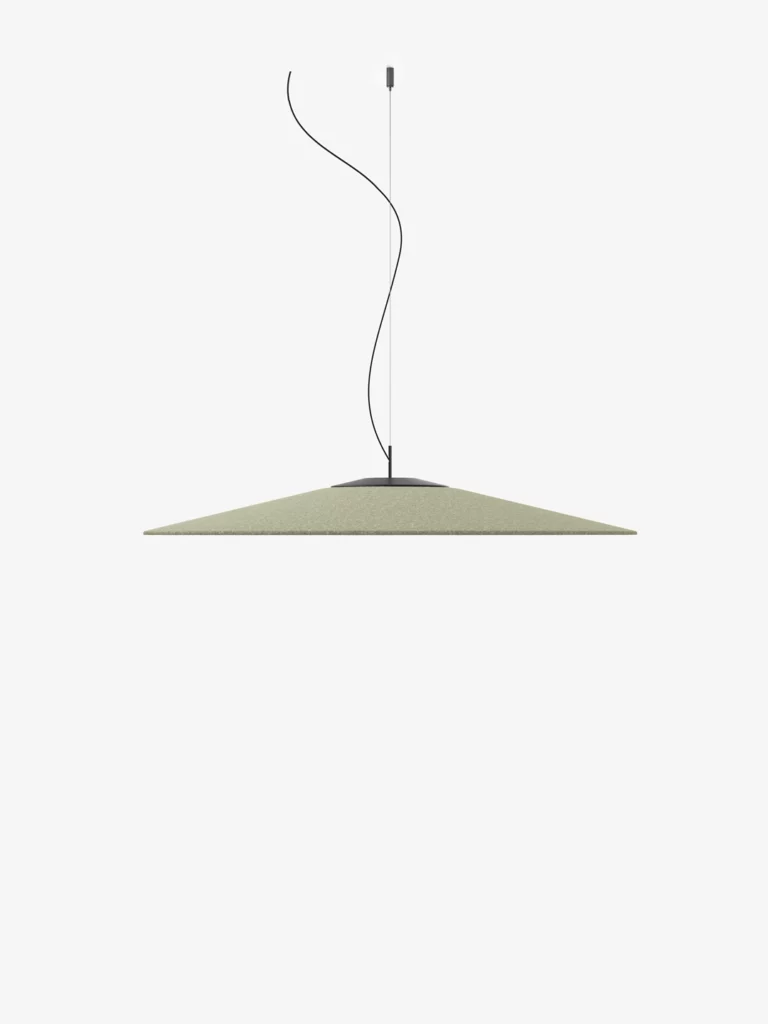KoinèFloor
designed by Mandalaki Studio
The Koinè family of lamps by Mandalaki expands with a new lighting solution.
Halfway between suspension lamp and a floor lamp, the new Koinè incorporates the technology and design of the suspension version, now equipped with an elegant structure consisting of a long and slender carbon stem, a cylindrical steel counterweight, and a foot dimmer.
Available in matte black finish (Ø 55cm), Koinè floor adapts to different types of spaces thanks to the possibility of adjusting its inclination and height during setup. The light source, with its glass lens, illuminates evenly and distinctly.
Models
A07TD
Koinè

A07TD
Koinè
Main specifications
| Typology | Floor | ||
|---|---|---|---|
| Application | Indoor | ||
| Material |
|
||
| Finishes |
|
||
| Dimensions (mm) | H max 2500 – min 150, L 2180, D ø 8 (counterweight), ø 550 (shade) | ||
| Light Source | LED 19W (only light source – for more details, download datasheet), 2700K or 3000K, CRI 90 | ||
| Insulation Class | III |


A specifically created mineral lens has in fact been applied to the light source. The beam of light transmitted through the lens appears homogeneous and clear, a wide cone of light with clearly defined edges.
The border between light and shade thus results as sharp, not blurred in any way. Thanks to careful direction of the light source, Koinè does not dazzle, guaranteeing a strong yet comfortable light experience.










